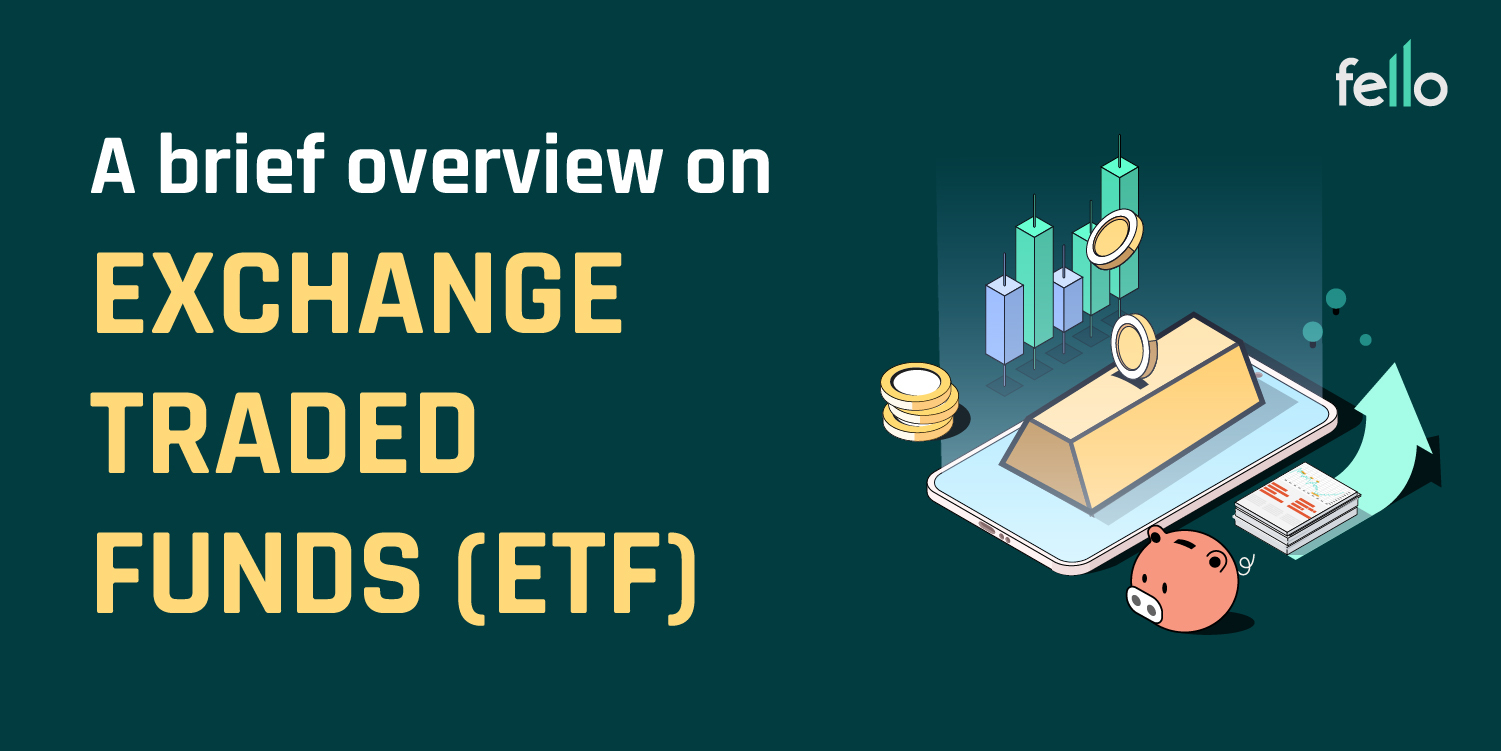The popularity that comes with ETF is growing every day! Investors are getting the best deals out there as they come with the benefits of mutual funds and the flexibility of stocks. But are you equipped with a brief overview of ETF? Take a look at the broad options and benefits before making your decision.
What is an ETF?
Exchange Traded Funds (ETFs) are investment funds that are traded on stock exchanges just like stocks. ETFs track a particular index, commodity, or a basket of assets, and allow you, the investor to gain exposure to a diverse range of investments.
How does ETF work?
ETF is a collection of investments, say, stocks, bonds, etc. The price of an ETF changes all through the day just like any other stock as per its demand. Its trading value of it is based on the net asset value of the underlying stocks that an ETF represents.
Are ETFs active or passive?
It is as if the majority of the ETFs in the market are passive. They either track an existing index like Nifty-50 or follow a rule-based predefined approach to select stocks. But there are indeed actively managed ETFs too.
What are the various types of ETFs?
- Equity ETFs: These are funds that invest in stocks or equity securities. They may track an index, a sector, or a specific theme.
- Fixed Income ETFs: These funds invest in fixed-income securities such as government bonds, corporate bonds, or municipal bonds. They may also track an index or a specific type of bond.
- Commodity ETFs: These funds invest in commodities such as gold, silver, oil, or agriculture products. They may track the price of the underlying commodity or invest in futures contracts.
- Currency ETFs: These funds invest in currencies or currency derivatives. They may track the performance of a specific currency or a basket of currencies.
- Alternative ETFs: These are funds that invest in alternative assets such as real estate, infrastructure, or hedge funds. They may provide exposure to alternative investments with the ease and liquidity of ETFs.
- Leveraged and Inverse ETFs: These funds use financial derivatives to provide magnified or inverse exposure to an underlying asset or index. They may be more suitable for experienced and sophisticated investors.
What are the advantages of investing in ETFs?
- Diversification: ETFs provide investors with a simple way to gain exposure to a diverse range of assets with a single investment.
- Lower costs: ETFs generally have lower fees than actively managed mutual funds. This is because they are passively managed and don’t require active research and analysis by a team of fund managers.
- Liquidity: ETFs are traded on stock exchanges and can be bought and sold at any time during trading hours, just like stocks. This makes them a highly liquid investment, as investors can easily buy and sell shares as needed.
- Transparency: ETFs are required to disclose their holdings on a daily basis, which provides investors with a high degree of transparency into the underlying assets they are investing in.
- Flexibility: ETFs provide investors with a range of investment options, including exposure to different asset classes, sectors, and geographies. This allows investors to create a diversified investment portfolio that meets their specific needs.
Despite these benefits, it’s important to note that ETFs also have some drawbacks.
- For instance, ETFs can be subject to market volatility and may not provide as much diversification as investors expect if they track a narrow index or asset class.
- Additionally, some ETFs may have liquidity issues if they invest in illiquid assets, such as certain commodities or emerging market securities.
- It is necessary to notice the tracking error of an ETF and it ideally should be zero. Otherwise, it actually indicates the ETF is not invested as per the index.
In conclusion, ETFs are a popular investment vehicle that offers a range of benefits for investors, including diversification, lower costs, liquidity, transparency, and flexibility.
However, you should carefully consider the risks and drawbacks associated with ETFs before investing. And to ensure that they understand the underlying assets and investment strategy of any ETF they are considering.

